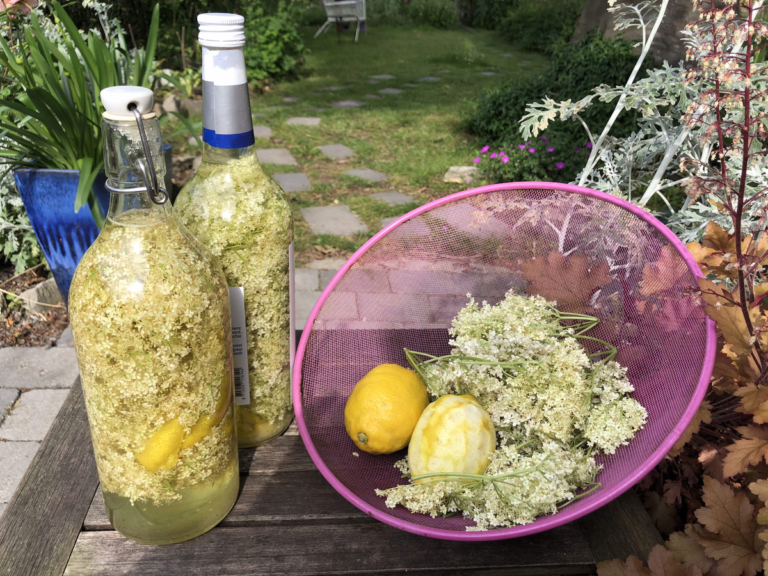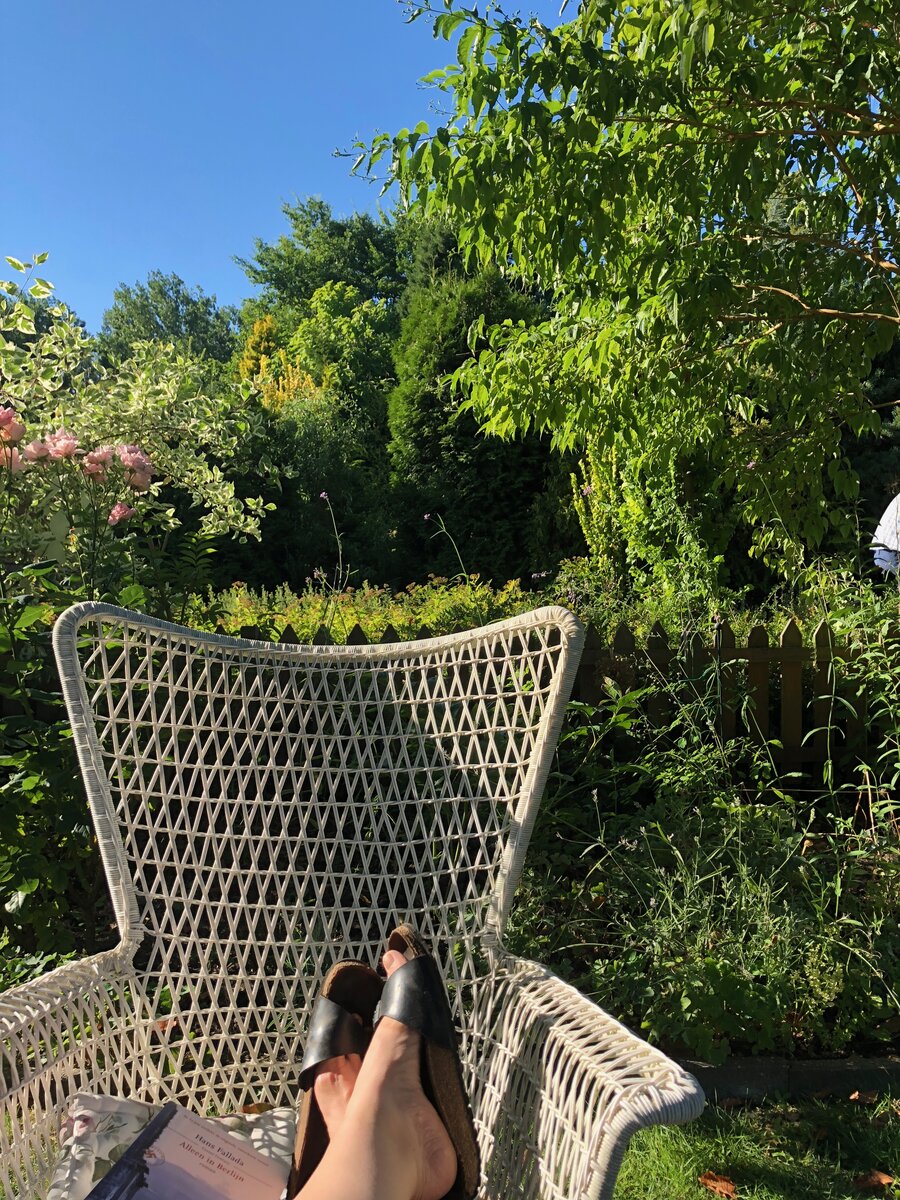June sneaks up on you after a springtime full of pruning, digging and planting. This year, it was even earlier – in May – that I saw the first elderflowers hanging in cloud-like bunches from their trees. Time to gather resources for another year’s batch of elderflower liqueur. Or “lick her” as the iPhone autocorrect insists on calling it, no matter how often I correct her.
Inspired by Ulla
My liqueur inspiration was Ulla, the mom of an old friend in Sweden. Ulla was a great cook, and years ago, when I practically lived with her family, she gave me my first sips of her herbal and fruity concoctions. Those Swedes know what to do with their foraged goodies! Red currant, black currants, bitters made of St. John’s Wort flower buds…
Ulla is no longer with us, so I had to create my own recipe – an amalgam of concepts picked up by reading a lot of blogs and recipes on this very topic. Macerations. The best ones call for pure alcohol – Everclear or another brand of 96% pure spirit. I couldn’t get that so easily at my local liquor store here in Holland, so I chose 40% vodka.
Vodka is vodka
I used to buy good name-brand vodka, like some garden liqueur snobs recommended. But after a taste test (and hangover test), no real difference was found between the top and bottom shelf brands. I also heard that all vodka is basically the same on NPR’s Planet Money “Vodka Proof” podcast. The rest is just branding. So now I pick whatever’s on sale (and the cheapest). And if it happens to be top shelf, lucky me!

Organic lemons
Next on the list is organic lemons, because all we want is pesticide-free zest. Without the pith! That makes the liqueur bitter, as I learned after sloppy and lazy zesting. I use a half of a zested lemon per liter of vodka. Or a bit more. Depends on how big the lemons are.
Picking the elderflowers
Somewhere I read that it’s best to pick the elderflower florets in the morning, before the sun hits then and bakes away the delicate flavor. I’ve taste-tested liqueur from 2 pickings (morning and afternoon), and didn’t notice any difference. So there goes that theory. This year I plucked on a hot dry afternoon, and the scent was the most amazing!
Luckily, we have a supply of organically grown elder trees on the allotment complex. And there’s no real picking competition from other gardeners. I pluck here and there, making sure to leave flowers within reach that can grow into elderberries in August (when I’ll be making elderberry liqueur). To reach the higher flowers, I use a straight garden rake to grab hold of the high branches and pull them down within reach.
Filling your containers
The fun part is filling your bottle/jar. For years, I’ve used hermetic Fido jars (more common in Europe than Ball Mason jars), but this year I noticed I used up all my jars too late – so I used some empty bottles I found and washed, and I think that’s better for non-fussy me. Because I never found a way to successful weigh down the elderflowers in the jars, and flower oxidation turns the liqueur a bit brown. The bottle neck, on the other hand, prevents oxidation like – wow, who knew!
I thought I was following Ulla’s recipe, but it turns out that mine packed a more of a wallop, according to her daughter. Here’s my recipe, which I also use for elderberries and black currants:
Recipe for elderflower liqueur

– 15 or so elderflower heads, to fill up 1/2 liter (after removing the green stems)
– Vodka (go for the liter bottles when they’re on sale!)
– Sugar to taste. I use a little less than a small white wine glassful. You can always add sugar later on, so don’t go overboard. But you do need sugar to bring out the flavors.
– Lemon zest 1/2 to 1 lemon per liter. No pith! Slicing the zest with a very sharp knife works well, so you get super thin slices (and not rasp). I use my carbon-steel garden Opinel.
– Empty liter bottle/jar, well-cleaned.
Shake the bugs out of your elderflowers. Then remove as much green stem as possible, because the elder leaves and stems are poisonous. Set the flowers aside while you pour the sugar into the bottle/jar. then drop in the slices of lemon zest. Add the elderflowers, filling the container about 1/2 way. Then pour in the vodka. Close the container and turn it up and down to gentle muddle everything.

Now park it in a cool dark place for about 6 weeks, giving the bottle a muddle now and then. Feel free to taste it on occasion to see how your maceration is getting along. Need more sugar – add some! Once it’s as delicious as can be, strain your liqueur into a clean bottle. It gets mellower as it ages, but that’s never really happened with me, except that time we forgot about a bottle. What a treat! Splash a bit into prosecco. Drink it pure. And enjoy.








